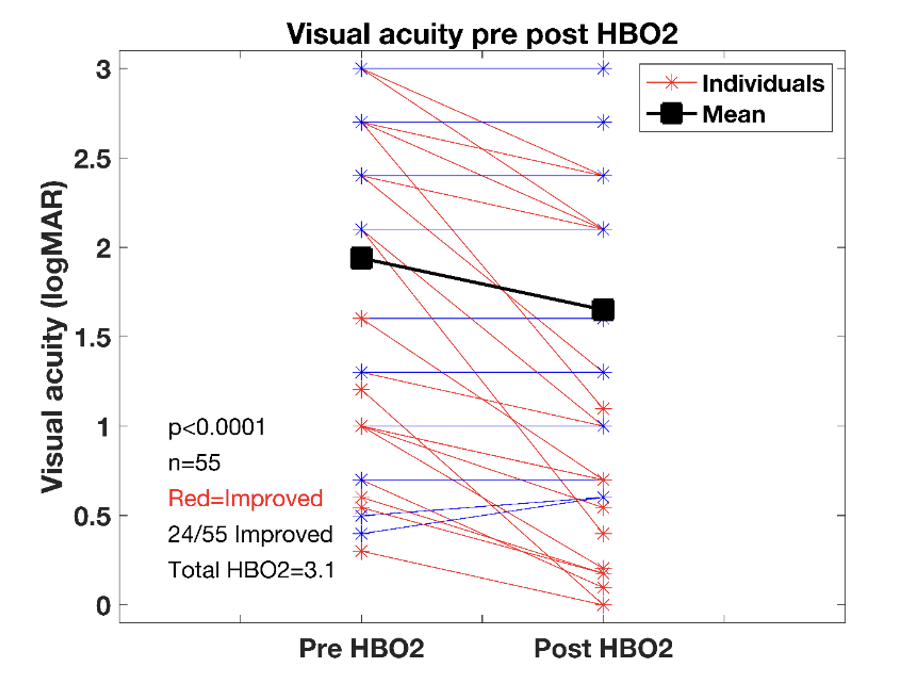
From the 2024 4th Quarter Pressure

Update from the Multicenter Hyperbaric Outcomes Registry
Data from the Multicenter Registry were used to challenge the conclusions of a recently published paper in Retina on the treatment of central retinal artery occlusion (CRAO) with HBO2.
The article by Kalaw et al., Evaluation of Retinal Artery Occlusion and its Visual Systemic Prognosis after Hyperbaric Oxygen Therapy 1, reported on a retrospective cohort of 27 patients and concluded that “Patients who develop retinal artery occlusion do not regain vision acuity after hyperbaric oxygen therapy. “
In a letter to the editor of Retina, the registry consortium pointed out that the patients in this study had an average of 40.6 hours between the onset of symptoms and the time to initiate HBO2 treatment. This delay was likely too long for HBO2 to immediately impact vision. Additionally, patients with certain occlusions (cilioretinal artery), which usually have a better prognosis, were excluded from the analysis.
 The registry data show that patients treated at Registry centers have, on average, an improvement in vision. The Registry currently includes 55 eyes with CRAO or branch retinal artery occlusion (BRAO), who received HBO2 the same day as their initial visual acuity measurement and had at least one treatment. This is twice as many people in the Kalaw et al. study. Figure presents pre- and post-visual acuity measurements in this cohort and shows that 44% of patients regained visual acuity, similar to what is seen in other studies.
The registry data show that patients treated at Registry centers have, on average, an improvement in vision. The Registry currently includes 55 eyes with CRAO or branch retinal artery occlusion (BRAO), who received HBO2 the same day as their initial visual acuity measurement and had at least one treatment. This is twice as many people in the Kalaw et al. study. Figure presents pre- and post-visual acuity measurements in this cohort and shows that 44% of patients regained visual acuity, similar to what is seen in other studies.
Figure 1. Visual acuity (Logarithm of the Minimum Angle of Resolution (LogMAR)) pre- and post-HBO2, all eyes are treated for CRAO or BRAO in Registry on the same day as the initial visual acuity measurement.
The registry provided a robust and data-driven response to an underpowered, retrospective study. This study, because it was published in a top ophthalmology journal, could affect ophthalmologic practice and lead to individuals not getting HBO2 who otherwise would benefit from the treatment. The ability to contest these results with prospectively collected data from diverse centers demonstrates the value of consistently collected registry data for the future of hyperbaric medicine.
References
- Kalaw FGP, Chartrand N, Wedekind L, Chen JS, Lin AC, Koretz Z, Meller L, Oca M, Jagadeesh V, Wilson K, Walker E, Freeman WR, Toomey CB. Evaluation of Retinal Arterial Occlusion and its Visual and Systemic Prognosis after Hyperbaric Oxygen Therapy. Retina. 2024. Epub 20240814. doi: 10.1097/IAE.0000000000004253. PubMed PMID: 39163734.




















